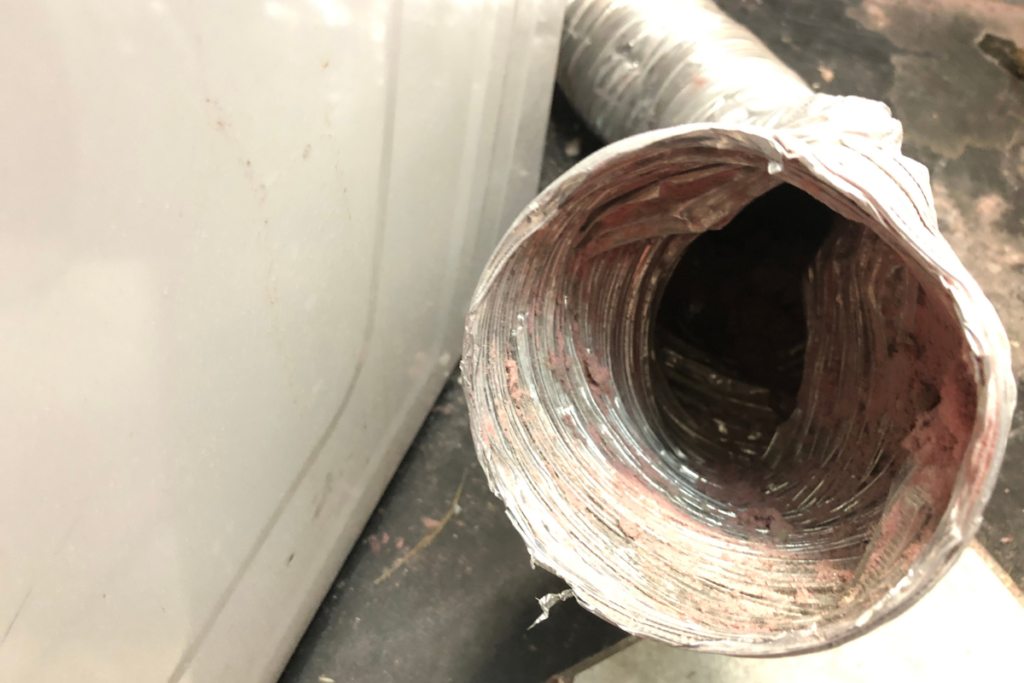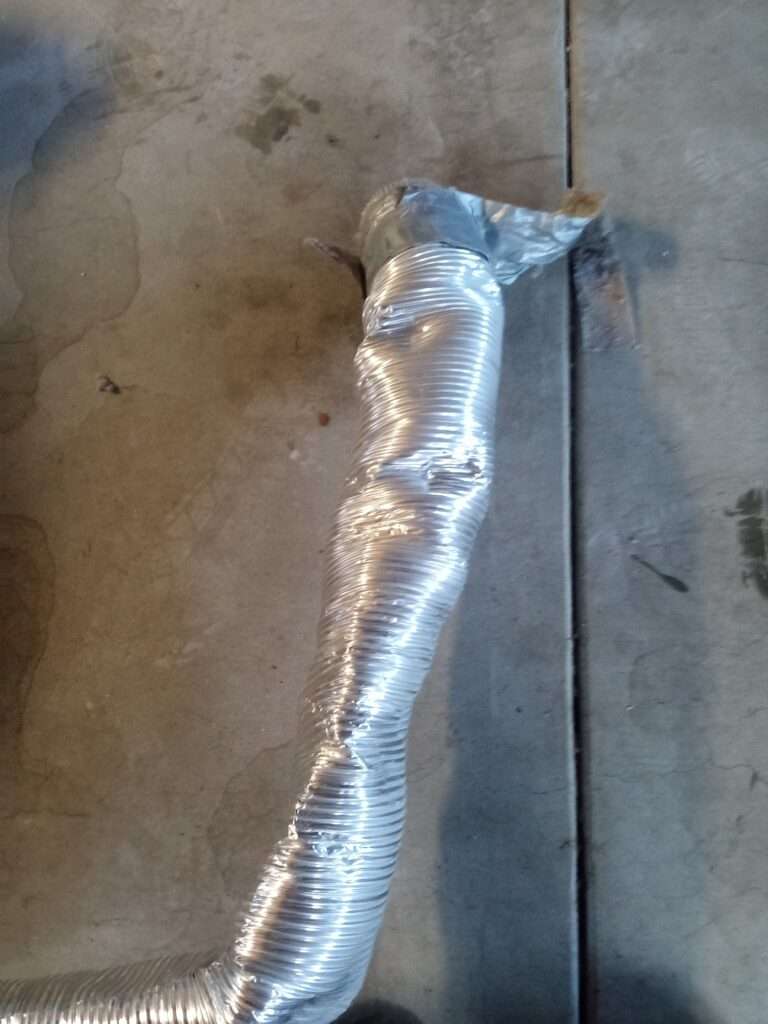
Understanding Water Accumulation in Your Dryer Duct: Causes, Effects, and Solutions
Table of Contents
Have you noticed water pooling or moisture buildup in your dryer duct? This issue may seem minor, but it can lead to significant problems, including reduced dryer efficiency, potential fire hazards, and even mold growth. Excessive moisture in your dryer duct isn’t just inconvenient; it can also be costly. This comprehensive guide explores the causes of water accumulation in dryer ducts, the associated risks, and effective solutions to prevent and resolve this issue. By addressing this problem proactively, you can ensure your dryer runs safely and efficiently.
Causes of Water Accumulation in Dryer Ducts
Understanding why water accumulates in your dryer duct is the first step in tackling this issue. Here are the most common reasons for moisture buildup:
1. Poor Ventilation
Poor ventilation is one of the primary causes of water buildup in dryer ducts. Long duct systems, excessive bends, or obstructions can significantly impact airflow. If airflow is restricted, moist air may become trapped inside the duct, leading to condensation and moisture buildup. A blocked or clogged duct can further exacerbate the issue by preventing proper moisture ventilation, creating a breeding ground for problems.
2. Condensation in the Duct
Condensation is a frequent cause of water accumulation. As your dryer releases warm, moist air, this air travels through the duct, where it can encounter cooler surfaces. The temperature difference between the warm air and the cool duct walls can cause moisture to condense inside the duct. This is especially common in areas with cold weather, where the duct’s exterior quickly cools down, leading to water buildup.
3. Duct Leaks
Any leaks or gaps in the duct can allow moisture from the outside to enter the dryer duct system. Duct leaks can also enable warm, moist air to escape and mix with cooler surrounding air, causing condensation around the leak. This can result in moisture retention within the duct and exacerbate water buildup issues, particularly in high-humidity regions.
4. High Humidity Levels
If you live in an area with high humidity, that excess moisture in the air can also make its way into the dryer duct. When humid air flows through the dryer vent system, it may increase moisture accumulation, especially if there are ventilation issues or leaks. High humidity can make drying clothes more challenging and lead to persistent water problems in the dryer duct.
Effects of Water in the Dryer Duct
Water accumulation in your dryer duct can lead to several issues that affect not only the efficiency of your dryer but also the safety of your home. Below are some key effects of excessive moisture in dryer ducts:
1. Reduced Dryer Efficiency
When water accumulates in the dryer duct, it impedes the dryer’s ability to exhaust moist air effectively, making the appliance work harder and for longer periods to dry clothes. This inefficiency leads to extended drying times and increased energy consumption, driving up utility bills and shortening the lifespan of your dryer.
2. Fire Hazard
One of the most serious risks associated with water in the dryer duct is the potential for a fire hazard. Damp lint can adhere to the walls of the duct and gradually accumulate, blocking airflow and increasing the risk of overheating. Lint is highly flammable, and the presence of moisture can lead to a dangerous buildup that could potentially ignite, posing a fire risk in your home.
3. Mold and Mildew Growth
Excess moisture creates a prime environment for mold and mildew growth within the duct. Mold spores thrive in warm, damp spaces, and once they start to grow, they can produce musty odors and adversely affect indoor air quality. Prolonged exposure to mold and mildew can lead to respiratory issues and allergies, making it a health concern for your household.
4. Corrosion and Damage to the Duct

Water retention can lead to corrosion in metal ducts, potentially causing leaks or structural weakness over time. Damaged ducts will need to be repaired or replaced, adding to the maintenance costs of your home. Corrosion can also reduce the efficiency of your dryer, creating further moisture buildup.
Preventing and Resolving Water in the Dryer Duct
Addressing water buildup in dryer ducts is essential for maintaining a safe and efficient home environment. Here are effective solutions to help prevent and resolve this issue:
1. Regular Dryer Vent Cleaning

Regular dryer vent cleaning is crucial to keeping the duct system free from lint and debris. Always clean the lint trap after each dryer use, as this reduces the amount of lint that enters the duct system. Scheduling professional dryer vent cleaning at least once a year ensures that your duct is clear of blockages, optimizing airflow and reducing the likelihood of moisture accumulation.
2. Install a Vent Hood
A vent hood can help prevent rainwater and debris from entering the dryer duct. Installing a vent hood on the exterior opening of your dryer duct keeps the elements and small pests out, reducing the potential for blockages and moisture buildup. A properly installed vent hood also directs airflow away from the duct, allowing for better ventilation and reducing condensation issues.
3. Repair Duct Leaks
If you detect any leaks or gaps in your dryer duct, repair them promptly to prevent moisture infiltration. Small gaps can often be sealed with metal tape or caulk, while larger leaks may require professional duct repair or replacement. Ensuring the duct system is airtight minimizes the risk of moisture seeping in, especially in humid conditions.
4. Improve Ventilation
Enhancing the ventilation of your dryer duct can alleviate moisture retention. If your dryer duct is too long or has multiple bends, consider modifying the layout to improve airflow. In some cases, you may need professional installation to ensure the duct system is optimized for effective moisture ventilation. Improving airflow helps minimize water buildup and improves overall dryer efficiency.
5. Use a Dehumidifier
In humid environments, a dehumidifier can be a practical solution for reducing moisture in the air, which subsequently lowers the chances of water accumulating in your dryer duct. A dehumidifier helps control the humidity levels inside your home, creating a drier environment that reduces the risk of condensation within the duct system.
6. Insulate the Dryer Duct
Insulating the clothes dryer duct, especially if it passes through unheated spaces like basements or attics, can reduce temperature differences that lead to condensation. Insulation prevents cold air from coming into direct contact with the warm, moist air inside the duct, thereby decreasing the chance of moisture buildup and helping the dryer system function efficiently.
Final Thoughts
Water buildup in dryer ducts may seem like a minor issue, but it can have significant consequences for both dryer efficiency and household safety. By understanding the causes of water accumulation and the potential hazards it brings, homeowners can take proactive measures to resolve and prevent moisture problems in their dryer duct systems. From regular cleaning and sealing leaks to installing a vent hood and using a dehumidifier, there are various effective solutions for keeping your dryer duct free from moisture. If you’re facing persistent water issues in your dryer duct, consulting a professional handyman can ensure proper inspection and maintenance, helping you maintain a safe, efficient, and moisture-free dryer system.
Choosing the Right Dryer Vent Setup
When it comes to optimizing the performance and safety of your dryer, selecting the appropriate dryer vent and ductwork is essential. A vent with damper, no screen is ideal, as it allows air to flow freely while preventing backflow and keeping pests out without clogging. For those looking to maximize space, a space saver aluminum dryer vent offers a compact solution that maintains efficiency without taking up too much room. Paired with a wall vent with damper, this setup is perfect for ensuring optimal ventilation and functionality.
Types of Dryer Vent Hoses
When choosing a dryer vent duct, there are several options to consider. Among the types of dryer vent hoses, aluminum dryer vent ducts are popular due to their durability and heat resistance. For tight spaces, an adjustable space saver aluminum dryer vent can be a lifesaver, as it’s designed to fit in small or awkward spaces without compromising airflow. Brands like Everbilt offer a range of ducts, such as the Everbilt in. x ft. duct, that come in various lengths and widths, allowing for a customizable fit based on your dryer setup.
Selecting the Right Transition Duct for Your Clothes Dryer
The clothes dryer transition duct is another critical component in your dryer venting system. A space saver aluminum dryer transition duct works well for smaller laundry rooms or tight spaces where flexibility is needed. Major dryer manufacturers often recommend aluminum dryer vent ducts for their compatibility with major brands of electric dryers, ensuring that your dryer operates safely and efficiently. The right transition duct not only enhances dryer performance but also reduces the risk of lint buildup, which can be a fire hazard.
Upgrading to a Durable Aluminum Duct
If you’re in need of a durable and reliable venting solution, an aluminum dryer vent duct is a great choice for nearly all major brands of electric dryers. This material is heat-resistant and less prone to wear, which ensures long-lasting performance. Whether you need a wall vent with damper or an adjustable space saver aluminum duct, you’ll find that an aluminum setup provides the strength and flexibility needed for efficient airflow and safety compliance in your home.
Need a Dryer Vent Cleaning and Inspection? Call Diamond Handyman Service in Susanville, CA! *Price subject to conditions; call for details.
Prevent water buildup, reduce fire risks, and improve your dryer’s efficiency with a professional dryer vent cleaning and inspection. Diamond Handyman Service offers thorough dryer vent services that keep your home safe and your appliances running smoothly. Serving Susanville and surrounding areas, we ensure your dryer vent is clean, clear, and functioning at its best. Don’t wait for issues to escalate—schedule your dryer vent cleaning today!
📞 Call us at 530-250-5382 or visit our website at:
